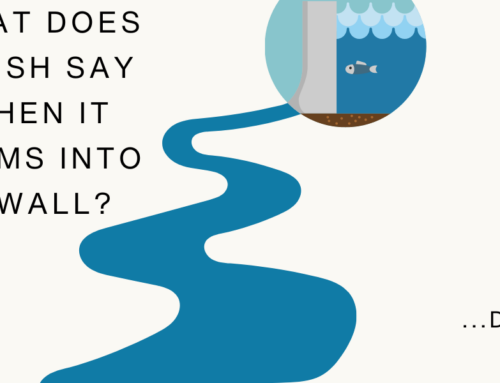For the Environment Committee
Testimony of Kelsey Wentling, River Steward
March 3, 2020
To: Honored Chairs Sen. Cohen and Rep. Demicco and Distinguished Members of the Environment Committee,
The Connecticut River Conservancy (CRC) supports the following bills pertaining waste reduction with some changes:
- S.B. No. 11 AN ACT CONCERNING THE RELIABILITY, SUSTAINABILITY AND ECONOMIC VITALITY OF THE STATE’S WASTE MANAGEMENT SYSTEM
- S.B. No. 296 AN ACT CONCERNING A MINIMUM RECYCLED GLASS CONTENT FOR WINE AND LIQUOR BOTTLES SOLD OR DISTRIBUTED IN THE NORTHEAST REGION.
- S.B. No. 297 AN ACT CONCERNING THE USE OF PERFLUOROALKYL OR POLYFLUOROALKYL SUBSTANCES IN CLASS B FIREFIGHTING FOAM.
- S.B. No. 299 AN ACT CONCERNING THE DISTRIBUTION OF SINGLE-USE PLASTIC STRAWS.
- H.B. No. 5339 AN ACT PROHIBITING THE RELEASE OF HELIUM BALLOONS INTO THE ATMOSPHERE.
- H.B. No. 5340 AN ACT CONCERNING THE MODERNIZATION OF THE CONNECTICUT BOTTLE REDEMPTION PROGRAM.
Since 1952, the Connecticut River Conservancy (CRC) and our members have worked to protect and sustain the Connecticut River watershed, from source to sea. However, plastic and waste pollution continue to plague the Connecticut River and its tributaries, choking wildlife and clogging our river and streams. We know that healthy rivers support healthy economies and communities, and we are tired of cleaning up our rivers every year. Support for these bills is support for clean water, healthy habitat and thriving communities.
Support S.B. No. 296 and S.B. No. 11
As New England’s waste and recycling systems become increasingly overwhelmed, at the expense of taxpayers in the region, increasing recycling content in beverage containers removes some of this burden from municipalities. S.B. No. 296 recognizes the need to address this issue across state lines at the regional scale. We support this effort to establish a consistent minimum recycled glass content for wine and liquor bottles in New England. Similarly, S.B. No. 11 promotes the most sustainable form of waste management: waste reduction. Setting a goal for municipalities to reduce per capita waste will ultimately ease the strain on municipalities while reducing the effects of waste pollution and climate change. While we applaud the proposed introduction of the Reduction and Infrastructure Development Program, we believe composting facilities and resource recovery facilities should be given a higher priority in Section 1(b).
Support S.B. No. 297 with changes
S.B.No. 297 will directly reduce exposure to PFAS and any further potential release into our waterways. Eliminating sources of PFAS, which is known to be toxic to both humans and species in aquatic environments, will protect the health of Connecticut habitats and communities. However, the bill timeline for elimination and take back programs does not match the urgency of this issue. PFAS in firefighitng foam for training purposes should be banned immediately and take back programs should be established by the end of 2020. CT should also make sure that firefighting foam collected in take-back programs not be incinerated, as was recently discovered in Cohoes, NY and other locations around the U.S. as contracted by the U.S. Department of Defense.
Support S.B. No. 299 and H.B. No. 5339
Single-use plastic straws and helium balloons are a pernicious source of aquatic pollution, known to directly harm wildlife and degrade water quality as they break down into microscopic waste. Each year, volunteers at the Source to Sea Cleanup collect hundreds of plastic straws, which endanger aquatic species in the Connecticut River and eventually Long Island Sound. S.B. No. 299 is a positive first step in reducing plastic pollution and protecting wildlife. Similarly, helium balloons released into the atmosphere ensnare and choke aquatic wildlife when they return back to our rivers and oceans. S.B. No. 299 and H.B. No. 5339 are commonsense bills that will directly reduce pollution to the benefit of wildlife, our water quality and human enjoyment of our rivers and oceans.
Support H.B. No. 5340 with changes
In 23 years of cleaning the Connecticut River watershed during the Source to Sea Cleanup, volunteers consistently collect more beverage containers than any other single item. Last year, 339 Connecticut volunteers removed over 5,000 beverage containers clogging the rivers and streams from the Connecticut River valley in a few short hours. Plastic bottles and beverage containers are far and away the most common items we find polluting our waterways, and it’s not just the Connecticut River — the Ocean Conservancy classifies plastic bottles as one of the top ten items most commonly found littering Connecticut trash cleanups. In 2019, the Ocean Conservancy tallied over 10,000 beverage containers overall in Connecticut. Pollution from beverage containers threatens the health of aquatic species, aids in the proliferation and transportation of invasive species and significantly reduces the aesthetic of, and therefore, attraction to and use of the river, a major economic and environmental resource. H.B. No. 5340 is a positive step in reducing pollution in the river by providing incentive to return beverage containers and returning them to the recycling stream. However, this bill does not go far enough as written because it does not include miniature nip bottles (nips) nor wine and liquor bottles. Of the 5,000 bottles collected at the Source to Sea Cleanup, over one-fifth of these were nips. To be successful in cleaning up our environment and incentivizing consumers to return their containers, the bottle bill must be expanded to include more types of beverage containers.
Thank you for the opportunity to comment on these critical bills. I can be reached at 860-704-0057 or kwentling@ctriver.org. Sincerely,
Kelsey Wentling
River Steward
1 Corkery, Michael. “As Costs Skyrocket, More U.S. Cities Stop Recycling.” The New York Times, The New York Times, 16 Mar. 2019, www.nytimes.com/2019/03/16/business/local-recycling-costs.html.
2 “Basic Information on PFAS.” EPA, Environmental Protection Agency, 6 Dec. 2018, www.epa.gov/pfas/basic-information-pfas.
3 “Department of Defense Illegally Burning Stockpiles of Toxic ‘Forever Chemicals.’” Earthjustice, 3 Mar. 2020, earthjustice.org/news/press/2020/department-of-defense-illegally-burning-stockpiles-of-toxic-forever-chemicals.
4 Giacovelli, Claudia. Single-Use Plastic: A Roadmap for Sustainability. The United Nations, wedocs.unep.org/bitstream/handle/20.500.11822/25496/singleUsePlastic_sustainability.pdf.
5 August 5, 2015, and Comments (108) |. “Balloons and Wildlife: Please Don’t Release Your Balloons.” Official Web Page of the U S Fish and Wildlife Service, www.fws.gov/news/blog/index.cfm/2015/8/5/balloons-and-wildlife-please-dont-release-your-balloons.
6 “Coastal Cleanup Data.” Reports, The Ocean Conservancy, www.coastalcleanupdata.org/reports.
7 “2017 NOAA Marine Debris Program Report.” Marine Debris, 2017, marinedebris.noaa.gov/sites/default/files/publications-files/2017_Invasive_Species_Topic_Paper.pdf.







